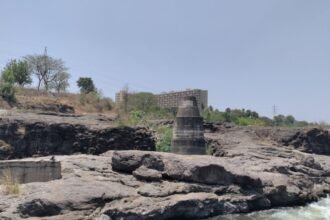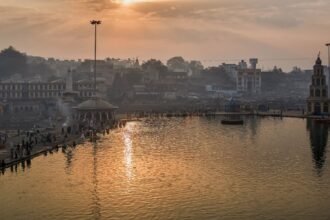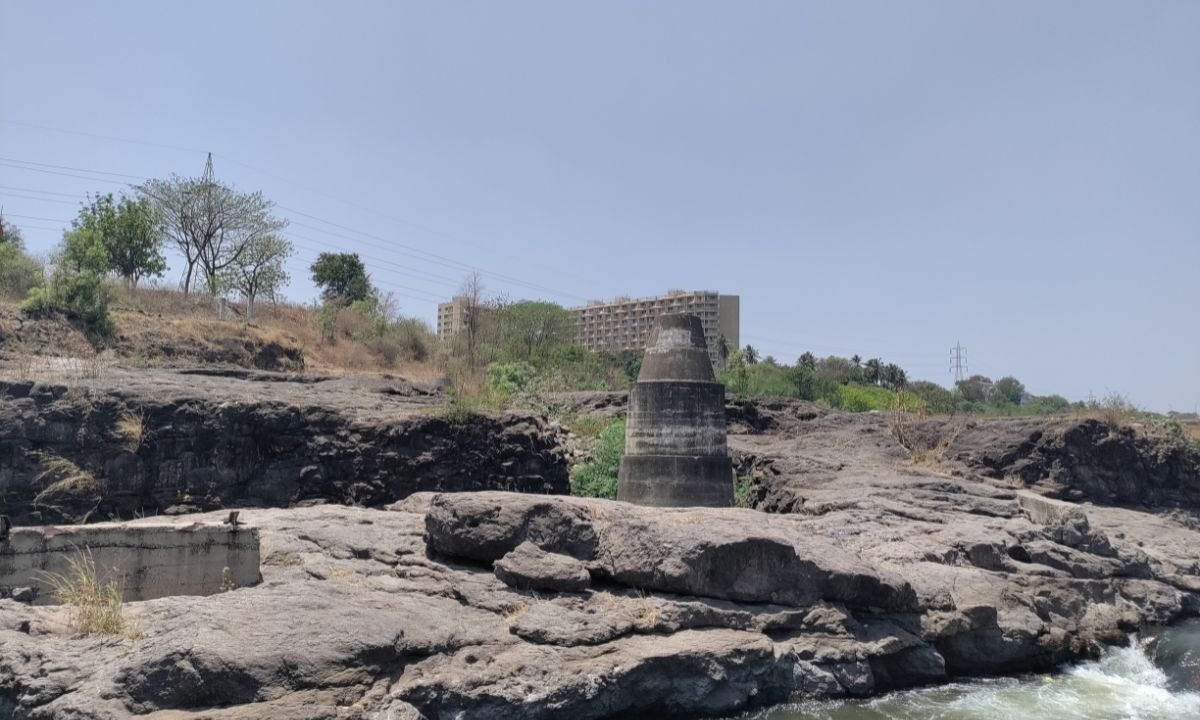People typically think of Prayagraj when they hear the word “Triveni Sangam.” This is where the Ganga, Yamuna, and Saraswati rivers are reported to meet. Hindus think this confluence is very holy, especially during the Kumbh Mela. But the Kumbh Mela is also held in Nashik, which makes many devotees wonder if there is a Triveni Sangam there as well. The solution is both mysterious and helpful.
Let’s look into the spiritual geography, myths, and belief systems that connect Nashik’s rivers to the idea of a Sangam, and what this implies for pilgrims in 2027.
What does Triveni Sangam mean?
Triveni Sangam is the name for the place where three rivers meet, usually two of which are visible and one of which is not. Hindus believe that this kind of meeting place is full with spiritual energy. People say that bathing at a Triveni Sangam cleanses sins, frees ancestral karma, and gives moksha.
The most famous Triveni Sangam is in Prayagraj (Allahabad), where
Ganga (visible)
Yamuna (visible)
Saraswati (invisible) meet in a single, sacred confluence.
So, where does Triveni Sangam Nashik fit into all of this?
Nashik’s Geography: What Rivers Flow Here?
The Godavari River, which starts in the Brahmagiri Hills in Trimbak, is Nashik’s main river and the spiritual lifeline of the Kumbh Mela that takes place here.
While Nashik does not have a traditional Triveni Sangam in the sense of three rivers physically meeting at one point, some local beliefs and texts refer to confluences that occur symbolically or underground. Some of these are:
Godavari River (primary)
Aruna River is a tributary.
Varuni or Kapila (mythical/invisible tributaries)
Some Hindu literature and local customs say that the Kapila and Aruna rivers meet the Godavari spiritually near Kushavarta Kund, making a spiritual sangam. So, even if the Triveni Sangam Nashik isn’t a place like Prayagraj’s, it has symbolic and biblical meaning.
Kushavarta Kund: Nashik’s Sacred Bathing Spot
Located in Trimbakeshwar, the Kushavarta Kund is the main ghat where devotees bathe during the Nashik Kumbh. People hold this kund in high regard since it is where a drop of Amrit from the heavenly Kumbh (pot) landed, making it as important as a sangam.
Local priests and religious texts say that the divine powers of several rivers come together here in a spiritual way. Even though there is no visual confluence, this notion is what gives rise to the name Triveni Sangam Nashik.
Mythology and the Invisible Sangam
Rivers aren’t usually characterised by their physical geography in spiritual books. The Saraswati River in Prayagraj, which can’t be seen, is a good example. In Nashik, too:
The Kapila River (linked to sage Kapil Muni) is believed to merge invisibly with Godavari.
The Aruna River, though seasonal and lesser known, is said to contribute spiritually to the sangam.
Mythology, devotion, and ceremonial tradition are more important than geography when it comes to believing in a Triveni Sangam Nashik. Devotees bathe in the Godavari at the Kumbh with the same respect as they do at Prayagraj.
Significance In 2027, during Kumbh Mela
The story of the Triveni Sangam Nashik adds to the holiness of the journey during the Nashik Kumbh Mela 2027. Pilgrims think that bathing in the Kushavarta Kund unites them with the energy of three holy rivers, making it just as powerful and life-changing.
For people who are looking for spiritual answers, faith often goes beyond scientific evidence. The energy of the location comes from the thoughts and feelings of millions of people. The most important thing is the religious purpose underlying the deed, not how many rivers you see.
Also read : Why Godavari Kumbh River is Sacred at Nashik Mela
How to Get to Nashik’s “Sangam”
The symbolic Triveni Sangam in Nashik is best experienced at:
Kushavarta Kund, Trimbakeshwar
Godavari Ghat, Ramkund area in central Nashik
Both locations will be focal points during the Kumbh Mela 2027, especially on the days of Shahi Snan and other significant rituals.
If you want to feel the spiritual side of Triveni Sangam Nashik, arrange your trip for one of these special bathing days.
Devotion Beyond Geography
There are several areas in India where myth, spirituality, and geography come together. Even though the Triveni Sangam Nashik isn’t apparent to the eye, it is firmly ingrained in the spiritual minds of millions.
Taking a bath in the Godavari, which is thought to be connected to the divine energy of other rivers, is just as sacred and freeing for people who go to Kumbh Mela 2027.
Conclusion
So, is there a Triveni Sangam at the Nashik Kumbh Mela? No, not in a physical way, but yes in a spiritual and mythological way. People who come to the Godavari don’t just want to witness the rivers meet; they want to experience their faith, destiny, and karma come together in the divine waters.
This strong conviction makes Nashik’s rendition of the sangam equally as important, which adds another depth of mystery to the Kumbh Mela experience.






